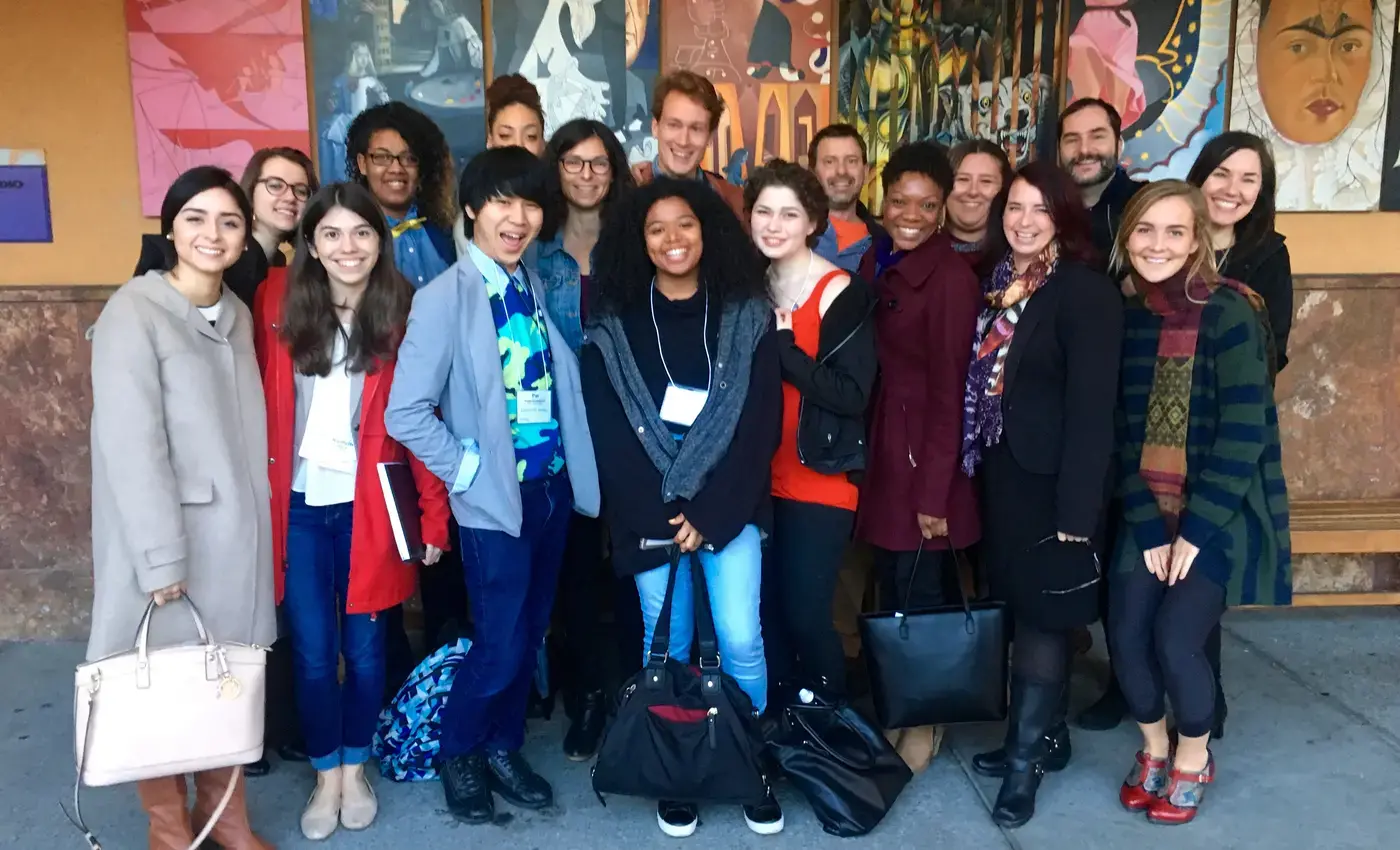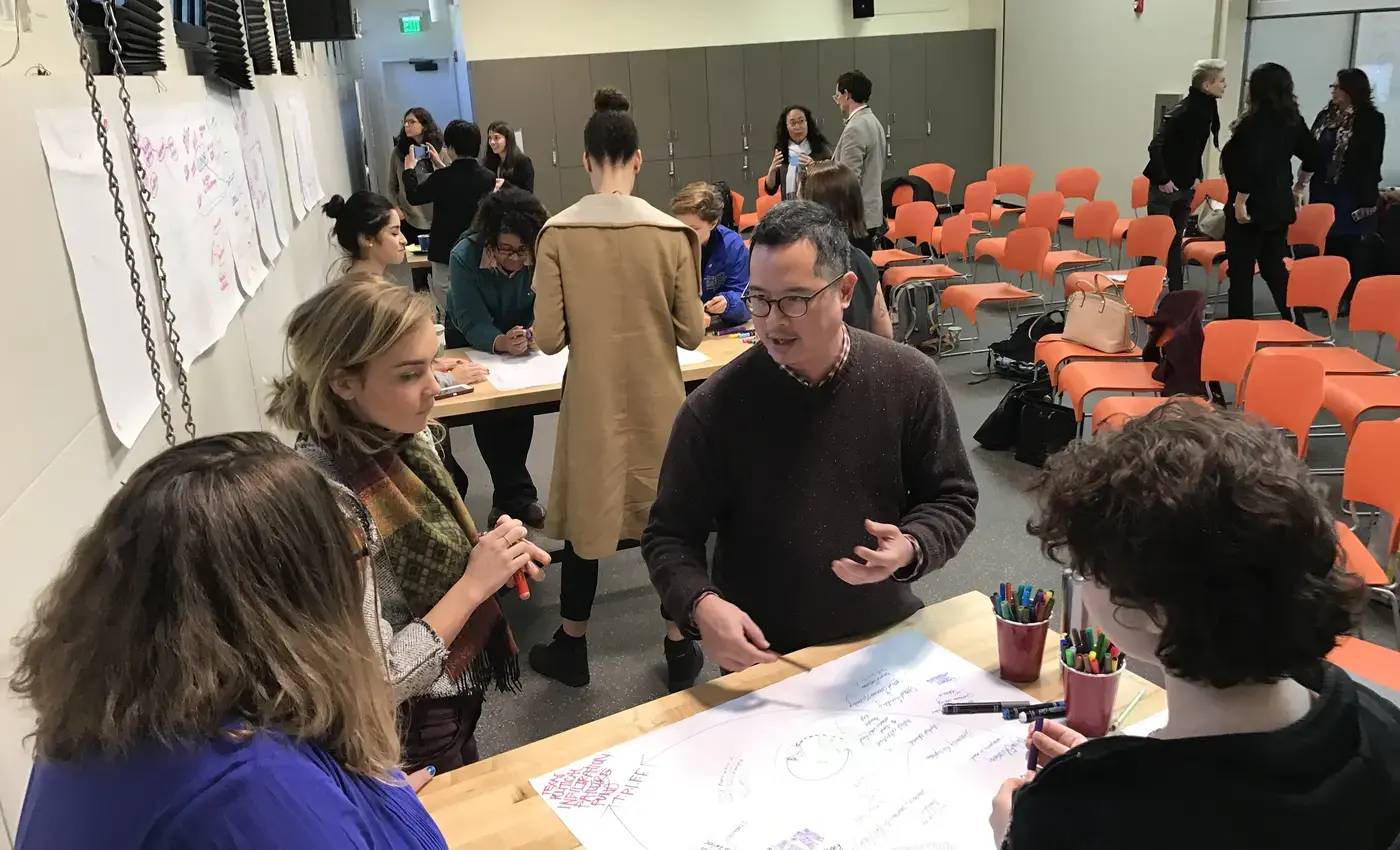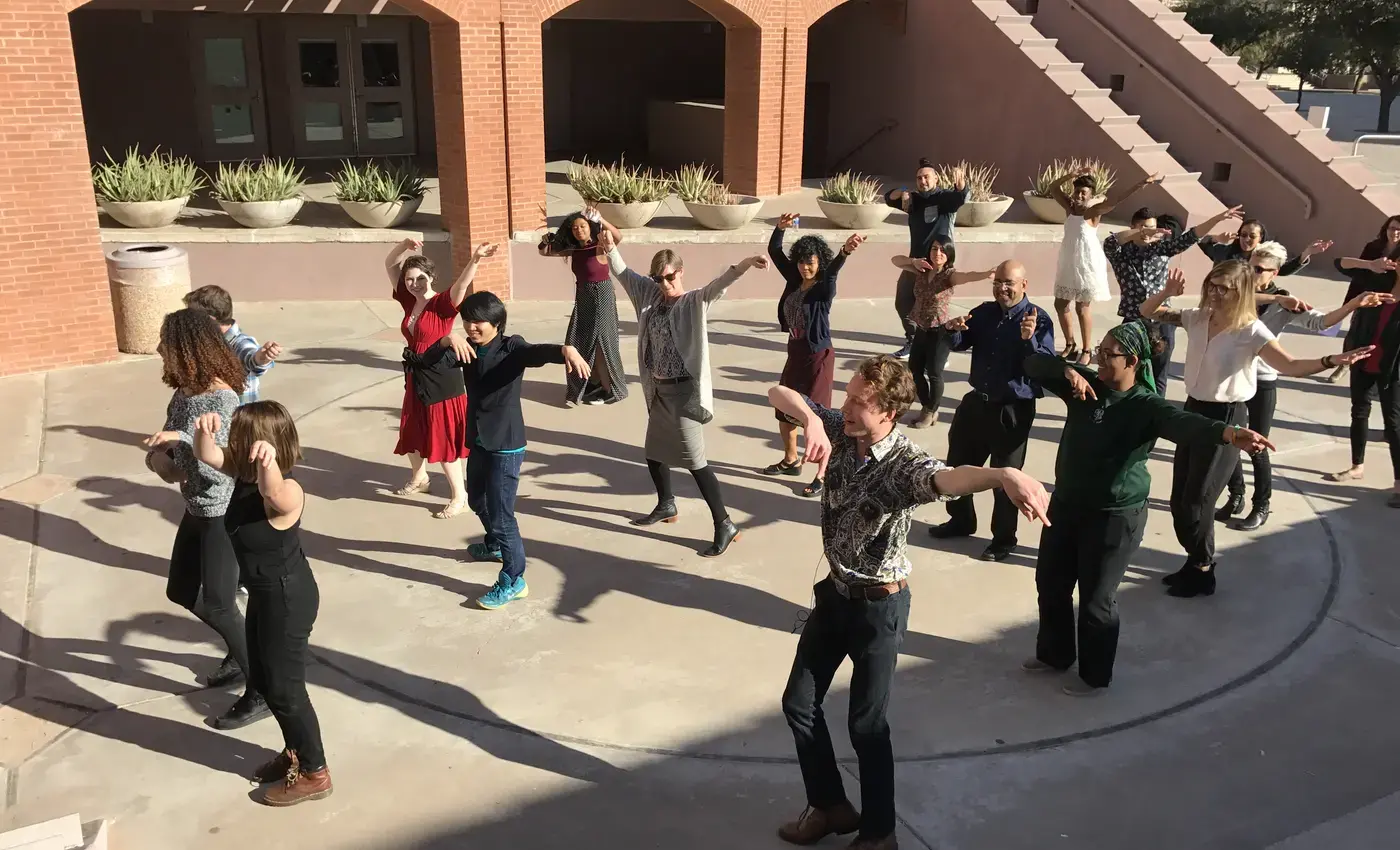Designing the Future
This January, four Bennington students took part in a think tank with nine peers from Arizona State University and ten delegates from the Los Angeles-based Center for Cultural Innovation. The goal of the six-week program, conceived by Bennington College, ASU, and CCI and supported by a grant from the Ford Foundation, was to draw upon art and design thinking to radically reimagine the future of arts and culture in America.
The collaboration—which took the form of a for-credit course, "Studio for the Future of Arts and Culture"—was conceived to provide a chance for students in the arts to imagine future directions for the arts sector and to forge relationships with other students, young professionals, and established leaders in the field.
Co-designed by Robert Ransick, faculty member in the visual arts at Bennington College, and Cyndi Coon from ASU, the class allowed 13 students working in fields including landscape architecture, industrial design, dance, visual arts, music, digital culture, biological sciences, and law to tackle questions about the future: what will work look like, how can support for the arts become more fair, equal, and equitable, and what will a financial model for arts support in the near and long term?
The Bennington undergraduates—Emma Maasch ’17, Emma Plotkin ’17, Geoffry Ballinger ’17, and Lauren Roshan ’17—worked alongside both undergrads and grad students from ASU. Students spent their time investigating, researching, interviewing, brainstorming and prototyping ideas about technology, philanthropy, education, training and business models.
The program was based at the Herberger Institute for Design and the Arts at ASU in Tempe, Arizona; during the six-week studio participants also traveled to San Jose, California to attend Future Arts Forward, a Center for Cultural Innovation convening, where they joined 236 artists, nonprofit arts professionals, and creative entrepreneurs from all over the country. The following day the students were hosted at Stanford University by Jeff Chang, journalist and music critic and the author of the widely praised We Gon’ Be Alright: Notes on Race and Resegregation, for a follow-up discussion led by Coon and a futurist brainstorming session led by Ransick.
Nobody brought the word ‘no’ into the room, and that’s part of the idea. It’s also not about making each other feel good, but how the team, bringing all of our perspectives together, can solve the issue. Mariko Silver
Thanks to the Ford Foundation’s funding, ten delegates from that convening were invited back to ASU to attend a “charette”—final presentations of student projects. Topics of investigation ranged from “solidarity economies,” to developing an infrastructure for supporting black artists, to the role of failure in the creative process, among others.
Creating the space and time for exploring such questions was crucial—as was the premise that anything is possible. Prerequisites for the class included “Readiness to be an open minded, freethinker with a solid point of view” and “Willingness to be dangerous (in a good way) and cause a ruckus.”
While in Tempe, the Bennington participants also completed their Field Work Term placements at a variety of local organizations and firms.
“The studio expanded the student’s understanding of current cultural practice and emboldened them to use newly acquired skills, drawn from a variety of disciplines, to imagine compelling futures embedded with the values and opportunities they believe are essential for a more equitable and just cultural sector,” says Ransick.
"The connections the students made to culture workers from California and the depth of the peer-to-peer relationships they developed in the classroom will provide much opportunity for future collaborations as they work to realize their imagined futures.”
The students reported enthusiastically on the experience. “The collaborations and connections I made through this experience have widened my understanding of not only my own capabilities, but, more importantly, of what is happening and what is possible in the art world now and in the future,” said Ballinger ’17.
According to Roshan ’17, what she got out of the experience would seed her future work: “I learned that in order to make an impact and begin advancing the global black community, I need to be comfortable with myself, and I must continue to follow my gut instinct. I feel that over my time at ASU, I realized I don’t have to conform to people’s rules, and it truly helped me out in the long run. The final week of the ASU program had the most impact on me, because I had my ‘a-ha’ moment. I realised what I had to do, how I was going to do it, and what is going to consume my time over the next 5, 10, 15, or perhaps even 20 years.
"What created this impact was the realization that the key ingredient missing from my work was honesty about myself and my story. I know first hand that the best way to get the global black community to listen is via being relatable, so I did just that. I made plenty of connections, including the President & CEO of the Center for Cultural Innovation, Angie Kim, who is publishing my final presentation on her website, Elizabeth D. Foggle, and Cristina Ibarra; all of whom are helping me to spread the word about my important work!”
Ultimately, the program was about imagining possibilities—something that needs time and space.
“Nobody brought the word ‘no’ into the room, and that’s part of the idea,” said Bennington President Mariko Silver, who helped develop the partnership. “It’s also not about making each other feel good, but how the team, bringing all of our perspectives together, can solve the issue.”


